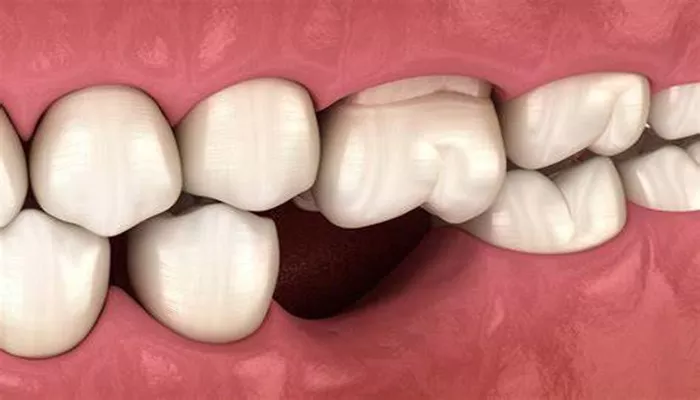Periodontal disease is a significant health issue that affects the gums and other supporting structures of the teeth. Traditional treatments often focus on cleaning and reducing inflammation. However, recent advances in regenerative medicine, particularly the use of stem cells, offer new hope for treating periodontal disease. This article will explore the role of stem cells in periodontal disease treatment, when they can be used, and the potential benefits and challenges associated with this innovative approach.
Understanding Periodontal Disease
What Is Periodontal Disease?
Periodontal disease is an infection of the tissues that support the teeth. It begins with gingivitis, which is inflammation of the gums. If untreated, it can progress to periodontitis, a more severe form that can lead to tooth loss. The main causes of periodontal disease include:
Bacterial Infection: Plaque buildup leads to inflammation and infection.
Poor Oral Hygiene: Inadequate brushing and flossing allow plaque to accumulate.
Risk Factors: Factors such as smoking, genetics, hormonal changes, and certain medical conditions can increase the risk.
Stages of Periodontal Disease
Gingivitis: The earliest stage, characterized by red, swollen gums that may bleed.
Mild Periodontitis: Increased inflammation and some loss of bone support.
Moderate Periodontitis: More significant bone loss and deeper gum pockets.
Severe Periodontitis: Extensive damage to the bone and soft tissues, leading to tooth mobility.
The Role of Stem Cells in Medicine
What Are Stem Cells?
Stem cells are unique cells with the ability to develop into different types of cells in the body. They have two main characteristics:
Self-Renewal: They can divide and produce more stem cells.
Differentiation: They can develop into specialized cells, such as bone, cartilage, or dental tissue.
Types of Stem Cells
Embryonic Stem Cells: Derived from embryos, these cells can become any cell type.
Adult Stem Cells: Found in various tissues, including bone marrow and dental pulp. They have more limited differentiation potential.
Induced Pluripotent Stem Cells (iPSCs): Adult cells that have been genetically reprogrammed to an embryonic stem cell-like state.
Stem Cells and Periodontal Disease
How Can Stem Cells Help?
Stem cells can potentially regenerate damaged tissues in periodontal disease. They can promote healing and tissue regeneration in the gums and bone. The application of stem cells in periodontal therapy includes:
Regeneration of Periodontal Tissues: Stem cells can differentiate into cells needed for gum and bone regeneration.
Reduction of Inflammation: Stem cells may help modulate the immune response, reducing inflammation in periodontal tissues.
Enhancement of Healing: Stem cells can accelerate the healing process after periodontal procedures.
Current Research
Research is ongoing to determine the best ways to use stem cells in treating periodontal disease. Some studies focus on:
Dental Pulp Stem Cells: These cells, derived from the dental pulp of extracted teeth, show promise in regenerating periodontal tissues.
Mesenchymal Stem Cells: These cells, found in bone marrow and adipose tissue, are being studied for their ability to regenerate bone and periodontal ligaments.
When Can You Use Stem Cells to Treat Periodontal Disease?
Current Clinical Applications
As of now, the use of stem cells in periodontal disease treatment is still largely in the research phase. However, there are some clinical applications where stem cells may be used:
Severe Periodontitis Cases: In patients with advanced periodontal disease, where traditional treatments have failed, stem cell therapy may be considered as a regenerative option.
Bone Regeneration: Patients needing bone grafts for periodontal defects may benefit from stem cell-enhanced graft materials.
Post-Surgical Healing: Stem cells may be used to enhance healing after periodontal surgery.
Future Potential
The future of stem cell therapy in periodontal disease looks promising. Researchers are exploring various approaches, including:
Combination Therapies: Using stem cells in conjunction with traditional periodontal treatments to enhance outcomes.
Personalized Medicine: Tailoring stem cell treatments to individual patient needs based on their specific periodontal conditions.
Clinical Trials: Ongoing clinical trials are evaluating the safety and efficacy of stem cell therapies for periodontal disease.
Benefits of Using Stem Cells
Regenerative Potential
One of the most significant advantages of using stem cells is their regenerative potential. Stem cells can:
Regenerate Lost Tissue: They can help restore gum and bone tissue lost due to periodontal disease.
Promote Healing: Stem cells may speed up the healing process after surgery or injury.
Improve Functionality: Regenerated tissues can restore normal function and aesthetics.
Minimally Invasive
Stem cell therapy can be less invasive than traditional surgical procedures. This can result in:
Reduced Recovery Time: Patients may experience quicker recovery compared to more invasive surgeries.
Less Pain and Discomfort: Minimally invasive techniques often lead to less postoperative pain.
Challenges and Considerations
Ethical Concerns
The use of embryonic stem cells raises ethical questions. Most current research focuses on adult stem cells or iPSCs to avoid these issues.
Regulation and Approval
Stem cell therapies must undergo rigorous testing and regulatory approval before becoming widely available. This process can be lengthy and complex.
Cost and Accessibility
Stem cell treatments can be expensive and may not be covered by insurance. Accessibility to these therapies may vary based on location and healthcare systems.
Conclusion
Stem cells offer a promising avenue for treating periodontal disease, particularly in severe cases where traditional treatments are insufficient. While research is ongoing, the potential benefits of using stem cells include tissue regeneration, enhanced healing, and minimally invasive procedures. As science continues to advance, stem cell therapy may become a standard option for managing periodontal disease.
Patients interested in this innovative treatment should consult their dental professionals to discuss the latest developments and determine the best course of action for their specific needs. With proper research and clinical application, stem cells could revolutionize the way we approach periodontal disease treatment in the future.
Related topics:

